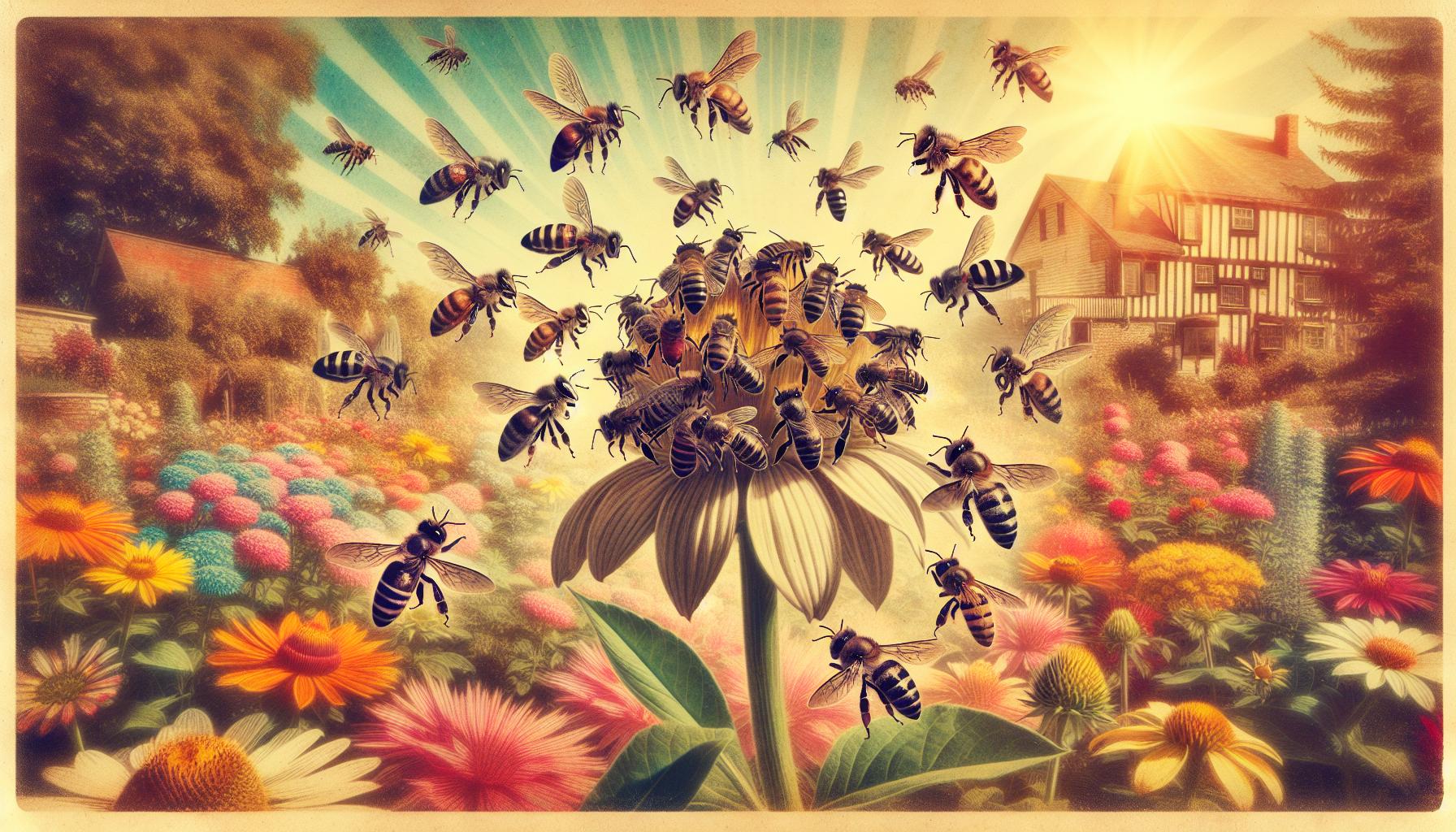Honey bees play a crucial role in our ecosystem, yet their diversity is often overlooked. With over 20,000 bee species worldwide, honey bees stand out not only for their honey production but also for their unique characteristics and behaviors. Understanding the different varieties of honey bees enhances our appreciation of these remarkable pollinators and their contributions to our environment.
From the hardworking Italian bee to the resilient Carniolan, each variety brings distinct traits that affect honey flavor, hive management, and adaptability. As beekeeping gains popularity, learning about these varieties is essential for both novice and experienced beekeepers, ensuring a thriving relationship with nature's most industrious insects.
Different Varieties of Honey Bees
Honey bees come in several varieties, each with its own traits and advantages. Understanding these varieties helps beekeepers manage hives effectively and produce high-quality honey.
Italian Honey Bees
Italian honey bees are among the most popular due to their gentle nature. They adapt well to various climates and have strong foraging abilities. Their honey is light in color and has a mild, sweet flavor, making it highly desirable.
Carniolan Honey Bees
Carniolan honey bees are known for their focus and productivity. They thrive in colder climates and are exceptional nectar gatherers. Their honey tends to be darker with a more robust flavor. They also maintain smaller colonies, making them easier to manage.
Russian Honey Bees
Russian honey bees are valued for their resistance to parasites and diseases. Hardy and well-suited to colder temperatures, they produce rich, flavorful honey. Their aggressive foraging habits lead to increased honey production.
Caucasian Honey Bees
Caucasian honey bees are recognized for their long proboscis, allowing them to access nectar from deep flowers. They are gentle and highly productive. Their honey is sweet and dark, pleasing many palates.
Buckfast Honey Bees
Buckfast honey bees are hybrids bred for resilience and productivity. They are gentle and produce high honey yields. Adaptable to various conditions, they are popular among beekeepers for their hardiness.
|
Variety |
Temperament |
Climate Adaptability |
Honey Color |
Honey Flavor |
|
Italian |
Gentle |
Moderate |
Light |
Mild |
|
Carniolan |
Focused |
Cold |
Dark |
Robust |
|
Russian |
Hardy |
Cold |
Rich |
Strong |
|
Caucasian |
Gentle |
Moderate |
Dark |
Sweet |
|
Buckfast |
Gentle |
Various |
Variable |
Variable |
Overview of Honey Bee Species
Honey bees play a vital role in pollination and honey production. Two prominent species are Apis Mellifera and Apis Cerana.
Apis Mellifera (Western Honey Bee)
-
Gentle temperament, making them ideal for beginners.
-
High honey production, with flavors varying by subspecies.
-
Adaptable to diverse environments.
-
Large colony sizes enhance pollination and honey output.
Apis Cerana (Asian Honey Bee)
-
More resistant to diseases and pests.
-
Produces smaller amounts of uniquely flavored honey.
-
Forms smaller, more manageable colonies.
-
Less prone to swarming, increasing hive stability.
Characteristics of Honey Bee Varieties
Size and Coloration
Italian honey bees are golden-yellow with black stripes, while Carniolan bees are darker, often grayish-black. Russian bees have dark hairs, giving them a robust appearance. Caucasian bees have darker bodies with gray tones, and Buckfast bees display various shades, depending on their genetic mix.
Behavior and Temperament
Italian bees are gentle and ideal for beginners. Carniolan bees are defensive but highly productive. Russian bees are resilient but slightly aggressive. Caucasian bees are mild-mannered but defensive when disturbed. Buckfast bees are calm and excellent foragers.
The Importance of Different Honey Bee Varieties
Pollination
Pollination depends heavily on honey bee varieties. Italian and Carniolan bees are active foragers, boosting crop yields and supporting biodiversity.
Honey Production
Different honey bee varieties produce distinct flavors. Italian bees create mild, light honey, while Carniolan and Russian bees yield darker, richer varieties. By selecting specific bees, beekeepers can cater to diverse consumer preferences.
Challenges Faced by Honey Bee Varieties
Diseases and Pests
Honey bees face threats like Nosema, American Foulbrood, and Varroa mites. Regular monitoring and treatments are essential for hive health.
Environmental Factors
Climate changes, habitat loss, and extreme weather conditions impact honey bees. Beekeepers must adapt to these challenges to ensure bee survival and productivity.
Conclusion
Honey bee diversity is essential for pollination, agriculture, and honey production. By understanding their unique characteristics, beekeepers can choose the best varieties for their needs. As environmental challenges grow, appreciating and protecting honey bee varieties becomes even more critical.
Interested in beekeeping or learning more about honey bees? Explore our in-depth guides on hive management, honey production, and pollinator conservation. Join us in supporting bee-friendly practices and ensuring a sustainable future for these incredible insects! Stay informed, subscribe to our blog, and take action to protect these vital pollinators.
Frequently Asked Questions
1. What is the role of honey bees in our ecosystem?
Honey bees are essential pollinators that support biodiversity and agricultural productivity by assisting plant reproduction.
2. How many honey bee species exist worldwide?
There are over 20,000 bee species globally, with several honey bee varieties playing vital roles in pollination and honey production.
3. Which honey bee variety is best for beginners?
Italian honey bees are ideal for beginners due to their gentle temperament and adaptability.
4. Why are Russian honey bees preferred in some regions?
Russian honey bees are highly resistant to diseases and parasites, making them valuable for colder climates.
5. How can beekeepers protect their colonies from pests?
Beekeepers can manage pests by regular hive inspections, using natural treatments, and ensuring proper hive hygiene.



